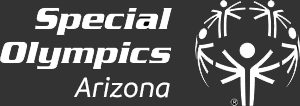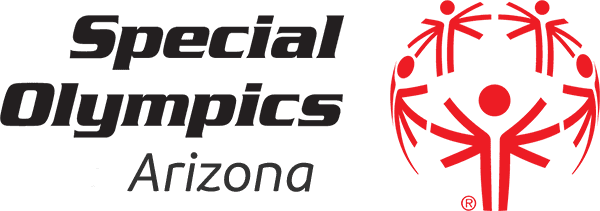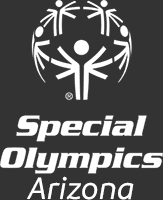What Is Autism Spectrum Disorder (ASD)?
What Is Autism Spectrum Disorder?
There are many common developmental disorders that most of us have heard of or had experiences with, and one of the most common also has some of the most variability: autism spectrum disorder. Whether you’ve had a personal experience with autism or not, it is worth recognizing this spectrum disorder, and the Special Olympics Arizona team is breaking down ASD to help provide information and knowledge on this disorder.
Autism spectrum disorder, commonly referred to as autism, or ASD, is a complex developmental condition that often involves persistent challenges with social situations, communication, restricted interests, and repetitive behavior. The degree of impairment in individuals with autism varies greatly, which is why it is referred to as a spectrum.
Autism Signs & Symptoms
As mentioned above, autism can vary greatly in severity of impairment among individuals. As such, some individuals may be diagnosed with autism spectrum disorder yet not experience any of the same signs and symptoms as another individual with ASD. There are some more common signs and symptoms that are noted in a large majority of individuals, affecting various categories of life.
Communication
Deficits in social communication are extremely common among individuals with autism. These deficits may include:
- Aversion to or difficulty maintaining eye contact.
- Lack of understanding or proficiency in non-verbal communication.
- Scripted or stilted speech.
- Does not respond to their own name by age 9 months.
- Does not show emotions through facial expressions by 9 months.
- Does not express or share interest in things around them at a young age.
Social Behavior
Aside from communicative deficits, there are social behavior deficits that are common among individuals with autism, including:
- Interpreting abstract ideas very literally.
- Difficulty making or keeping friends and relating to their peers.
- Decreased sharing of interests with others.
- Difficulty appreciating or understanding their own emotions.
- Difficulty understanding or relating to others’ emotions.
Restricted or Repetitive Behavior
Individuals with autism will frequently have restricted or repetitive behaviors. This can look like:
- Inflexibility of behavior or extreme difficulty coping with change.
- Becoming overly focused on a niche subject.
- Expecting others to be equally interested in a niche subject or interest.
- Difficulty tolerating changes to a routine or new behaviors.
- Sensory hypersensitivity.
- Stereotypical movements, such as hand flapping, rocking or spinning.
- Arranging things in a very particular manner.
Other Characteristics
Aside from social, communicative, and behavioral deficits, there are other common characteristics among individuals with ASD. These may include:
- Delayed language and movement skills.
- Delayed cognitive and learning skills.
- Hyperactive, impulsive or inattentive behavior.
- Unusual eating or sleeping habits.
- Epilepsy or seizure disorder.
Causes of Autism
There is not a single known cause for ASD, and given the variation in severity of the disorder as well as its complexity, there are likely a number of factors that influence what causes autism. Both genetics and environmental factors may play a role in autism.
Genetics
There are several different genes that are associated with ASD – for some children, ASD can be associated with a genetic disorder like Rett syndrome or Fragile X syndrome. For other children, genetic mutations might increase the chances of ASD. There are also genes that may affect brain development or the way that brain cells communicate, or they may determine the severity of symptoms. Some genetic mutations seem to be inherited, while others can occur spontaneously.
Environmental Factors
There is research being conducted in the autism community on how environmental factors, such as viral infections, medications or complications during pregnancy, or air pollutants can affect ASD in children.
Treatment for Autism Spectrum Disorder
While autism cannot be cured, there are a variety of treatments and interventions that may help individuals improve their skills and thrive independently.
Behavioral Approaches
Behavioral interventions focus on changing the behavior by understanding the before and after of a certain behavior. This is noted as one of the most effective approaches, and a popular behavioral treatment is Applied Behavior Analysis, which involves a systematic study of a child’s individual challenges, and is then used to create a structured behavioral plan for improving their adaptive skills.
Developmental Approaches
Developmental approaches focus on improving specific developmental skills, such as language skills, physical skills, or a broader range of interconnected abilities. Common developmental approaches include speech and language therapy and occupational therapy.
Educational Approaches
Educational approaches are given in a classroom setting and often focus on consistency and visual learning. In an educational approach, verbal instructions can be complemented with visual instructions or physical demonstrations.
Social-Relational Approaches
Social-relational approaches focus on improving social skills and building emotional bonds, often involving parents or peer mentors in the approach. A common peer-related approach is referred to as a social skills group, where children with ASD can interact with peers and be instructed on social skills.
Pharmacological Approaches
There is no medication that treats autism, but a pharmacological approach involves using medicine to treat accompanying symptoms and difficulties associated with ASD that might help individuals function better. Medicine might help manage symptoms such as high energy, self-harm, an inability to focus, seizures, sleep problems, or stomach issues.
Psychological Approaches
Psychological approaches, such as cognitive behavioral therapy, focus on learning the connections between thoughts, feelings, and behaviors. Working with a psychiatrist or therapist may help improve function and behavior in individuals with ASD.
How Common Is Autism Spectrum Disorder?
Autism spectrum disorder is fairly common, although the severity of its symptoms varies. The CDC tracks children with ASD, and in 2021 it reported that 1 in 44 children will be diagnosed with ASD. On average, 1% of the world’s population is on the autism spectrum.
What To Do if You Think Your Child May Have Autism
If you notice early signs or symptoms of autism spectrum disorder in your child, it is important to speak to your doctor and likely ask for a referral to a specialist. Specialists who can do a more in-depth evaluation and make a diagnosis include developmental pediatricians, child neurologists, and child psychologists or psychiatrists. Working with a specialist to understand the signs and symptoms is the best first step. Connecting with a community of other parents of children with ASD may help provide guidance and increase the availability of resources in your area.



